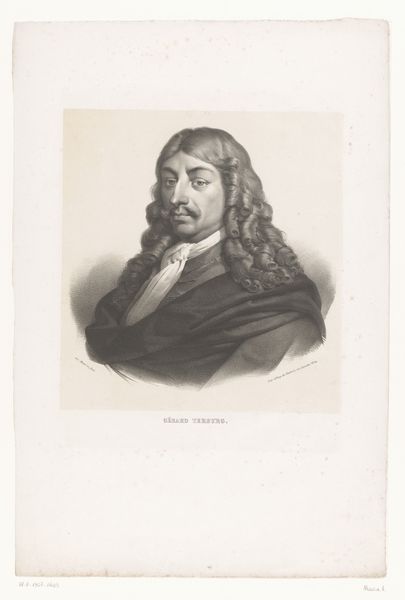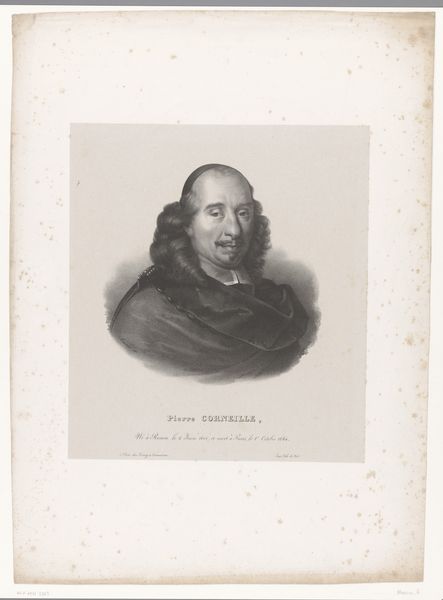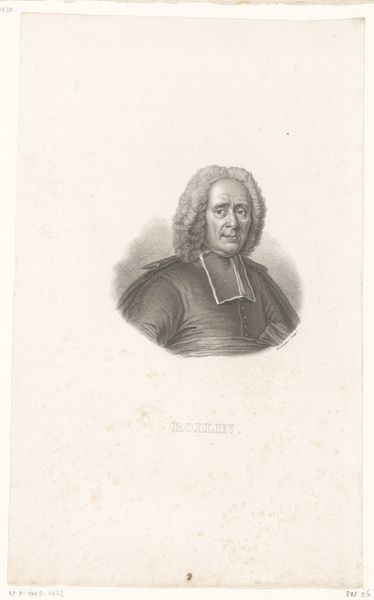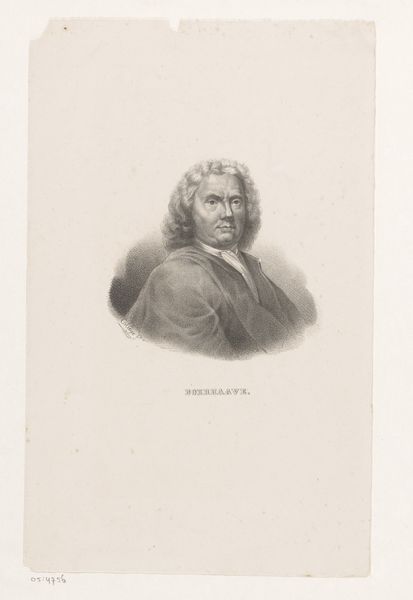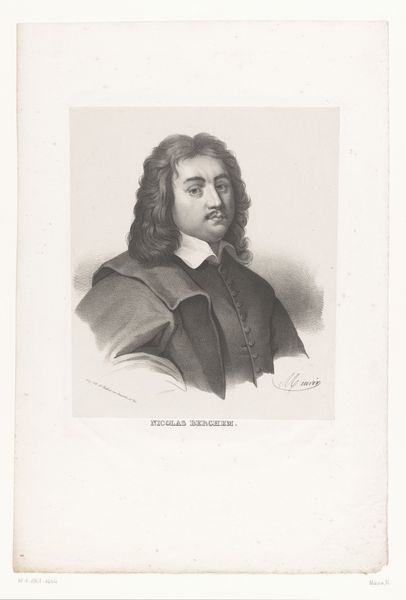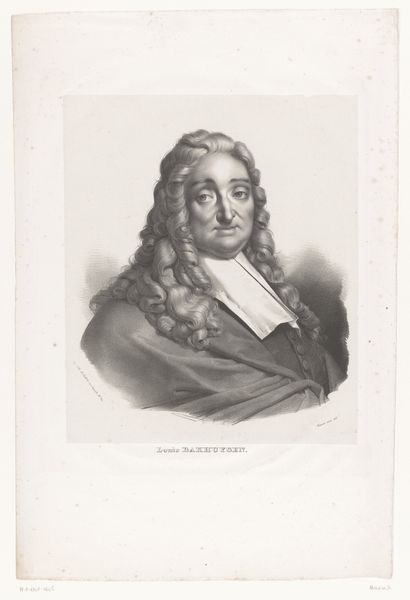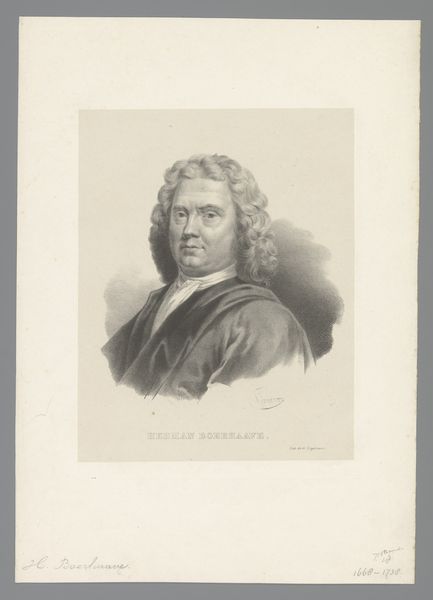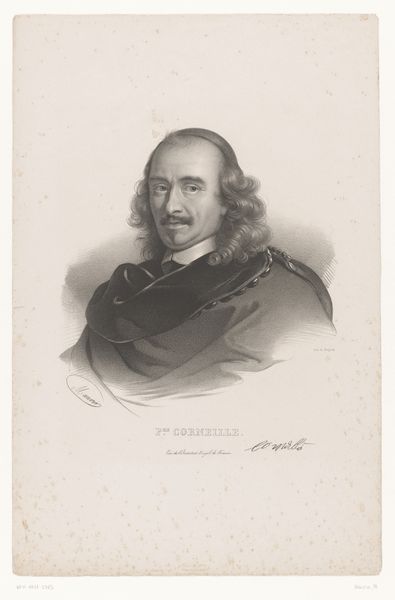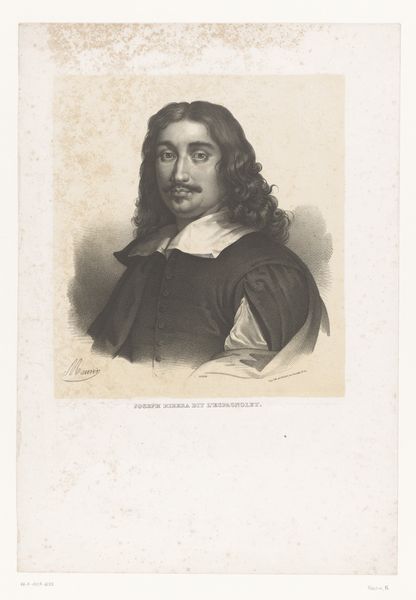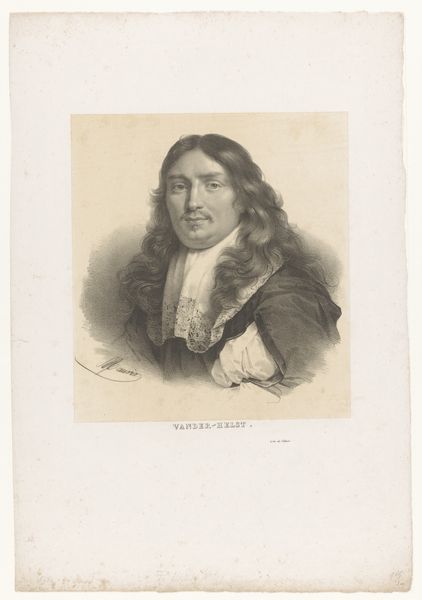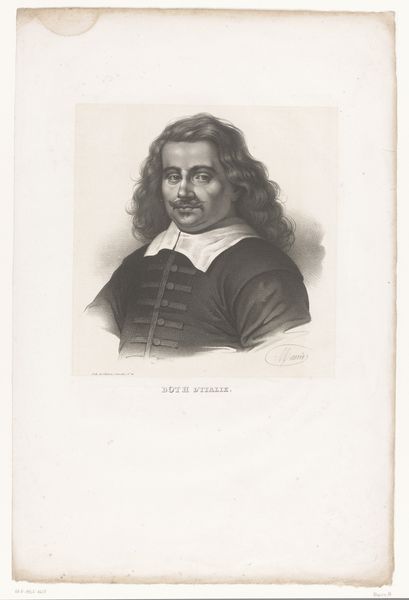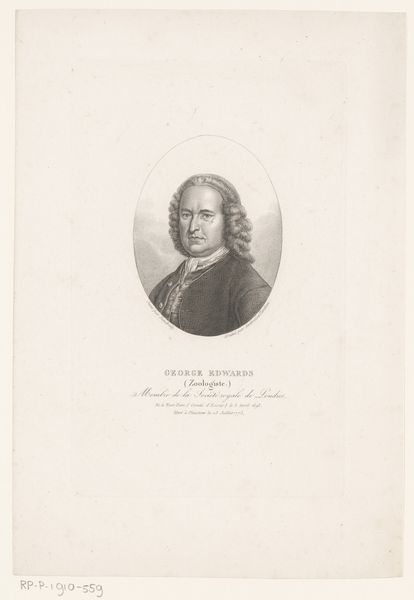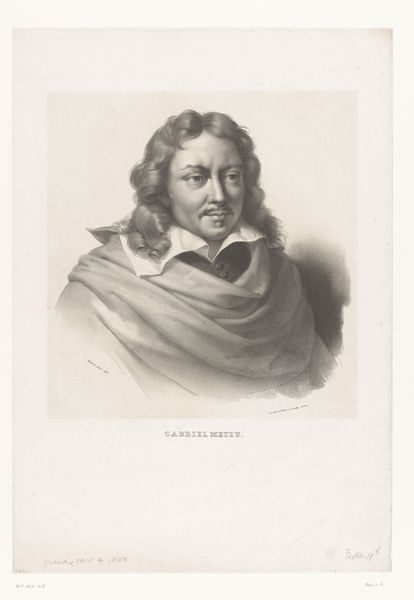
print, etching, engraving
#
portrait
#
pencil drawn
#
neoclacissism
#
light pencil work
# print
#
etching
#
pencil sketch
#
pencil drawing
#
pencil work
#
engraving
Dimensions: height 497 mm, width 339 mm
Copyright: Rijks Museum: Open Domain
This is Antoine Maurin’s lithographic portrait of Caspar Netscher. It was made in the 19th century, using a relatively new printmaking technique that democratized image production. Lithography depends on the subtle interaction of grease and water. The artist draws on a prepared stone surface with a greasy crayon, then treats the stone so that ink adheres only to the drawn areas. Paper is then pressed to the stone, transferring the image. In this case, we see how the lithographic process renders a soft, almost smoky quality, beautifully capturing the textures of Netscher's hair and clothing. This method allowed for relatively quick and inexpensive reproduction, making portraits and other images more accessible to a wider audience. The rise of lithography reflects broader social changes, with art and information circulating more freely than ever before. It’s a process that bridges the gap between the hand-drawn and the mechanically reproduced, anticipating the mass media of the future. Ultimately, by attending to the materials and the making, we gain a deeper understanding of its cultural and social significance, beyond just its aesthetic qualities.
Comments
No comments
Be the first to comment and join the conversation on the ultimate creative platform.
